Abstract
A Green's function approach is used in constructing a dynamic model of a semi-infinite length of the DNA homopolymer B poly(d) . poly(d). Considerable attention is focused on the hydrogen bond stretching close to the terminus. A melting (or breathing) coordinate (M) is defined as an average over the three linking hydrogen bond stretches in a unit cell. The thermal mean squared amplitude of (M) is enhanced at the chain end compared with the interior. Spectral branches at 69, 80 and 105 cm-1, as well as a local mode at 75 cm-1, are primary contributors to the enhancement. We suggest that this fact can affect the thermal melting of a DNA double helical homopolymer, enhancing the tendency to start from an end (if one is available). We show how certain infinite chain modes with small (M) amplitude can turn into breathing modes near the terminus, and suggest that the same phenomenon may occur near other specific base-pair sequences. There is also considerable attention paid to the low microwave region from approximately 0 to 1.75 cm-1. The thermally activated modes in this frequency region contribute approximately (0.02 A)2 to [M2(0)] at 40 K, approximately two orders of magnitude greater than for [M2(infinity)]. Most important however, is the existence of narrow resonant modes in this frequency region. Particularly pronounced resonances near 0.03 cm-1 and 0.08 cm-1 (approximately 0.9 and 2.4 GHz) amplify M2(0) at the terminus by about for orders of magnitude over the infinite chain value M2(infinity).
Full text
PDF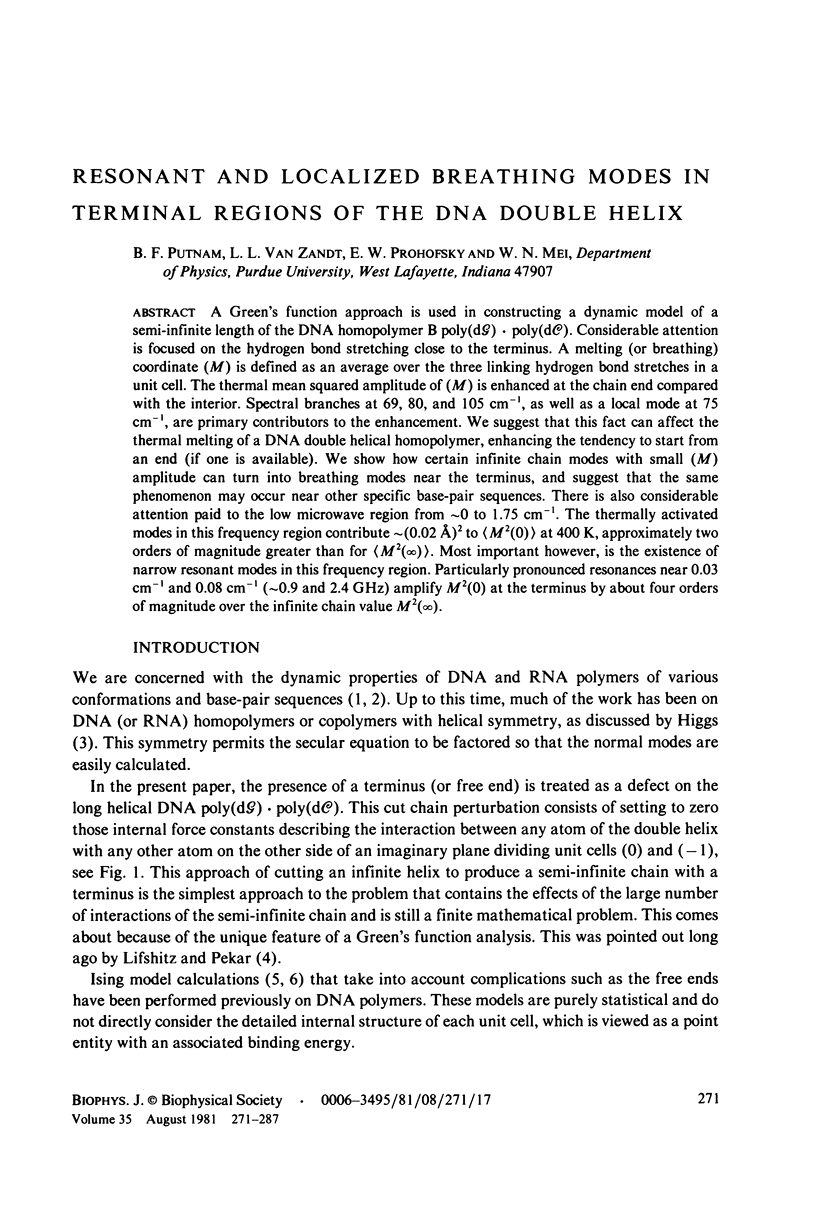
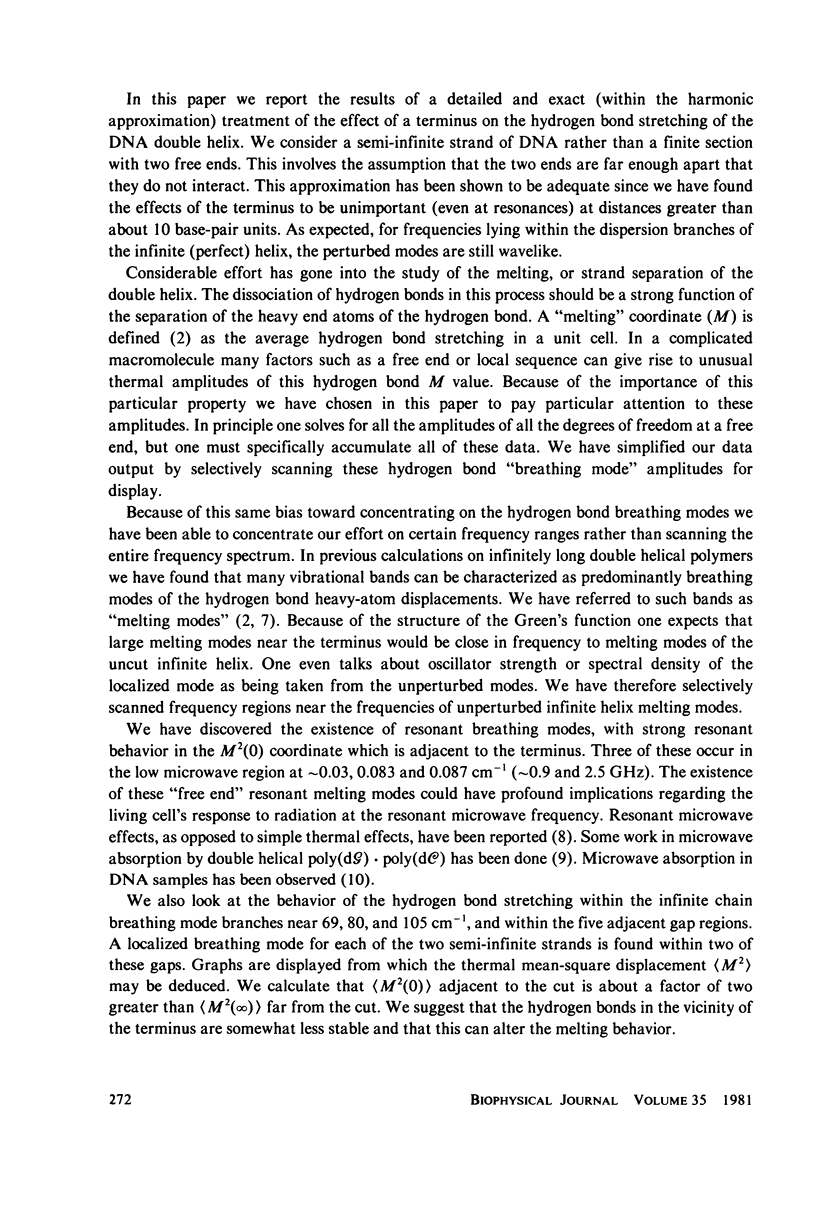
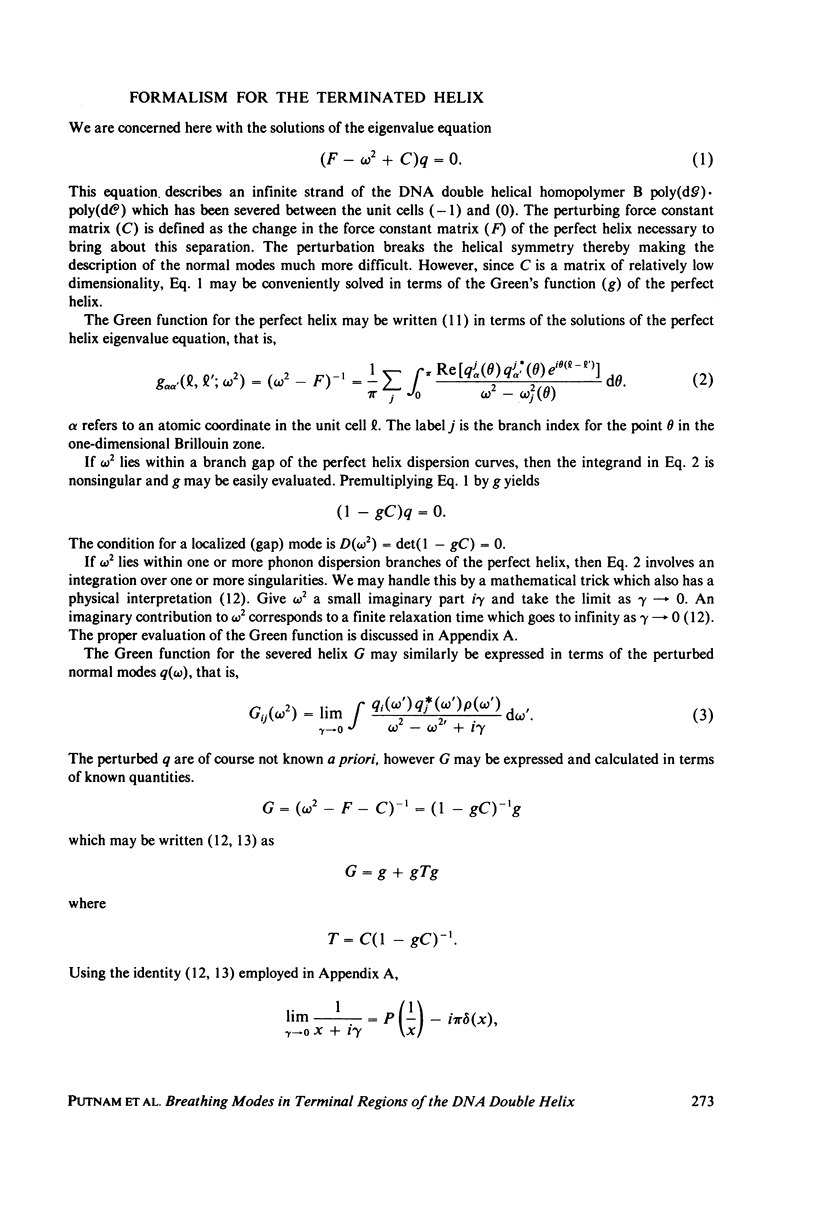
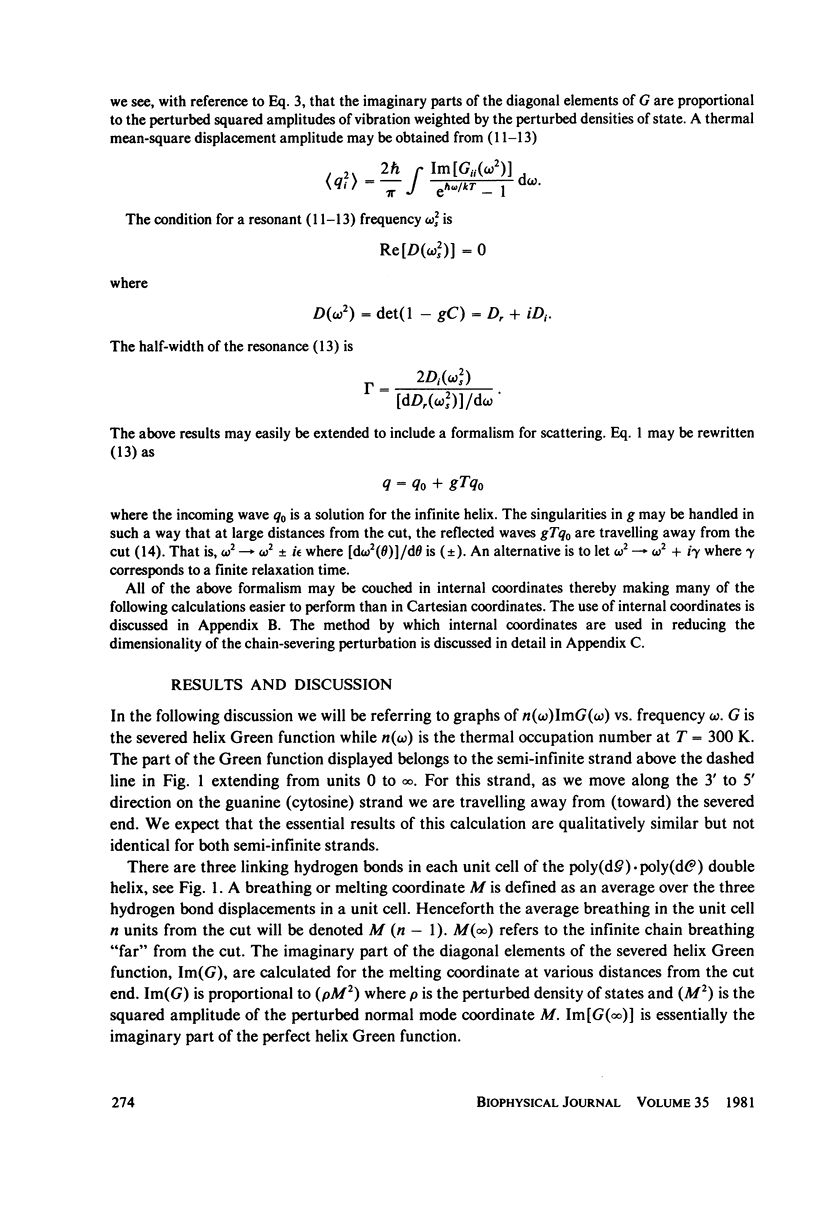
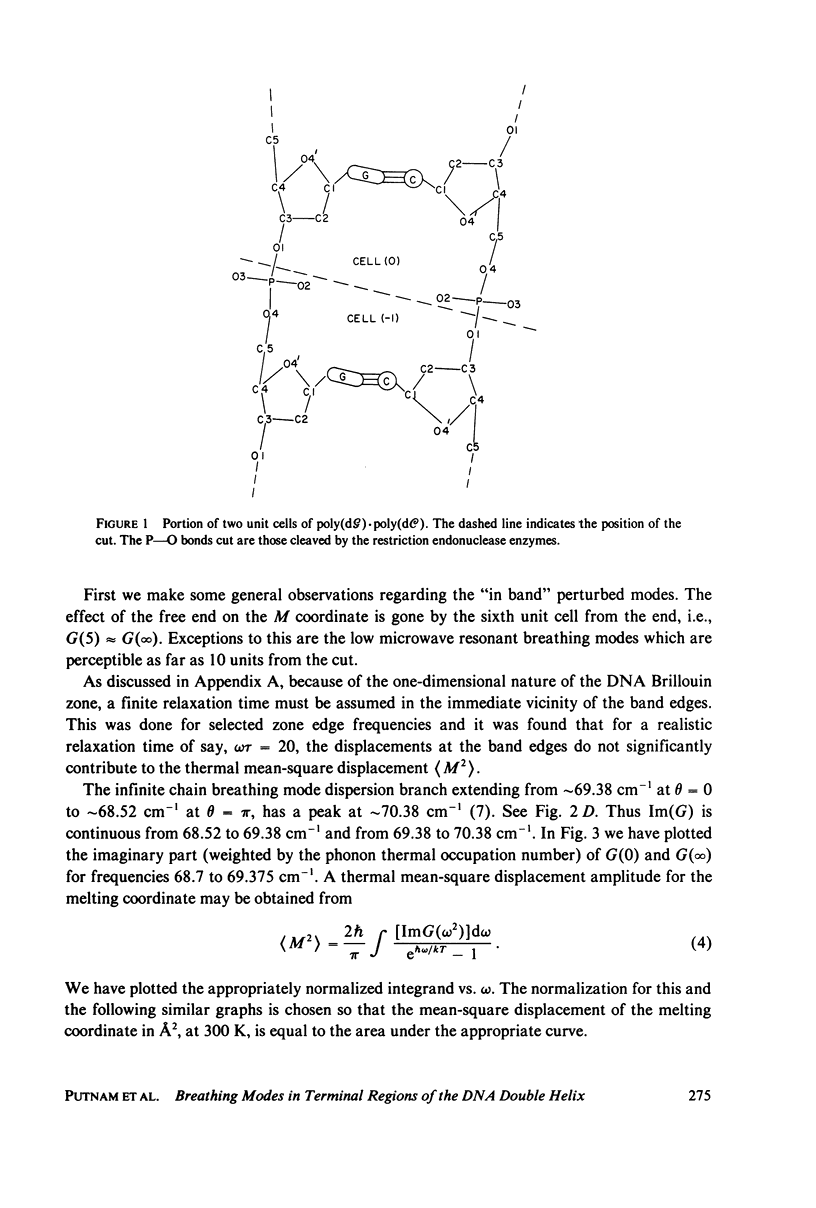
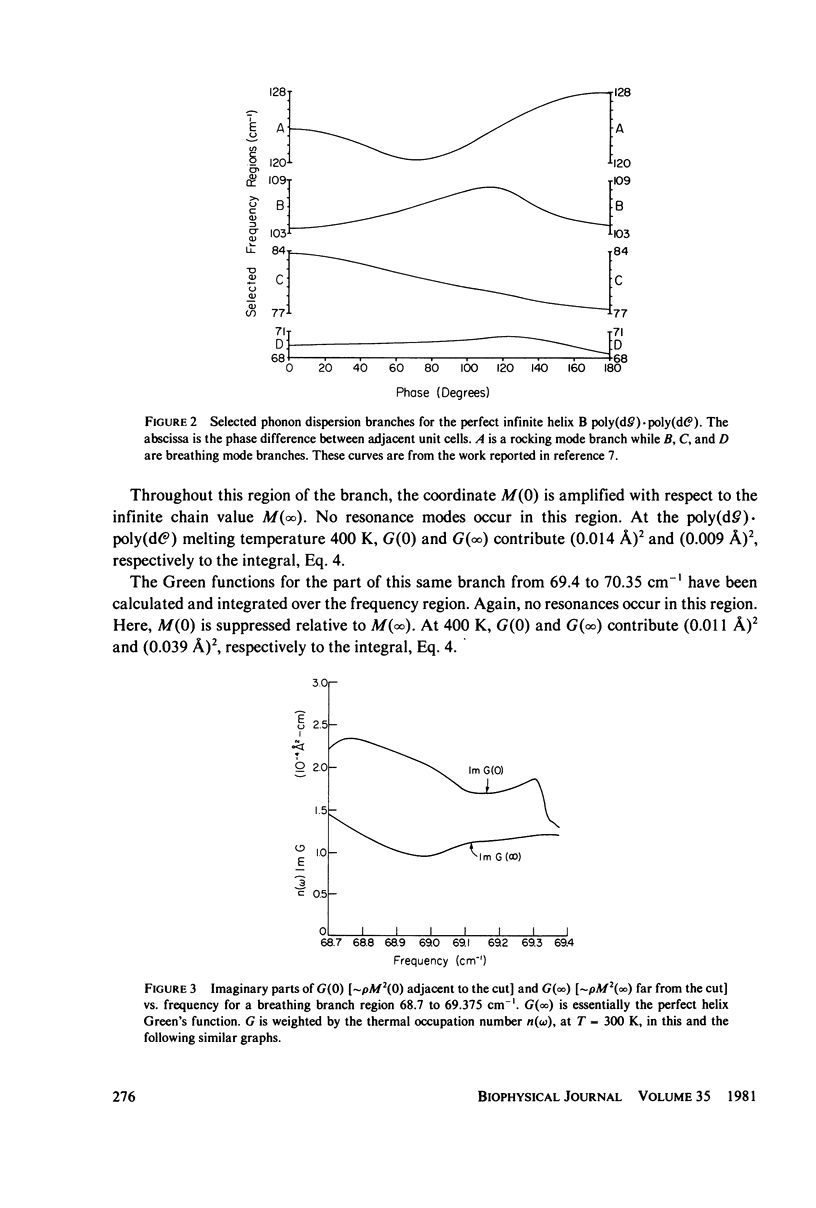
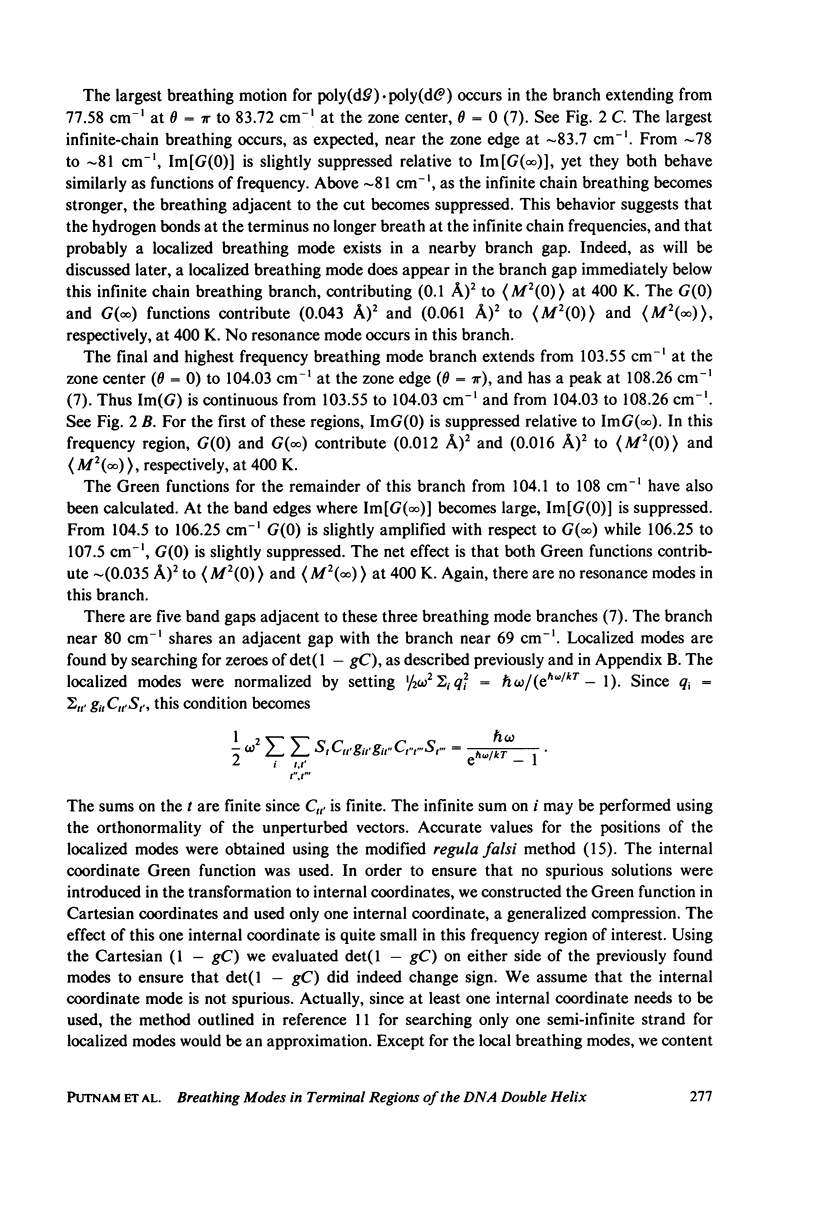
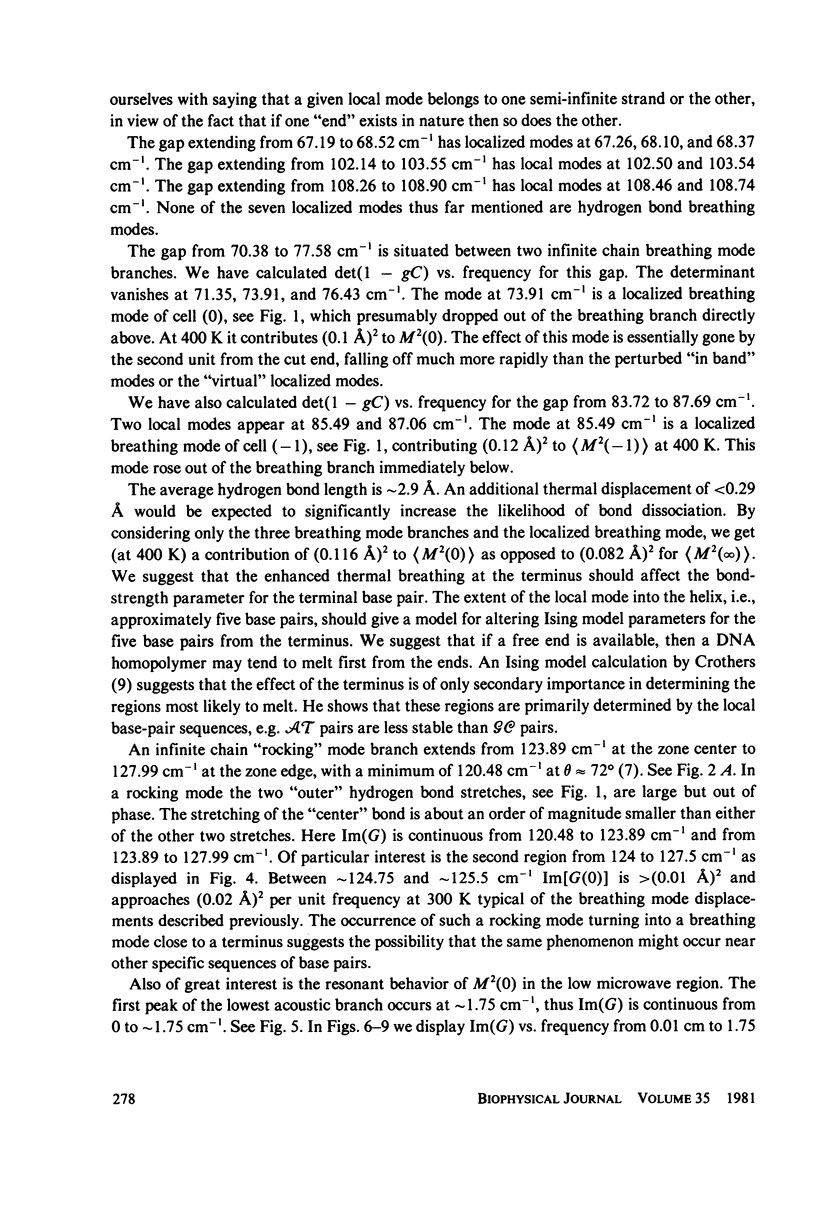
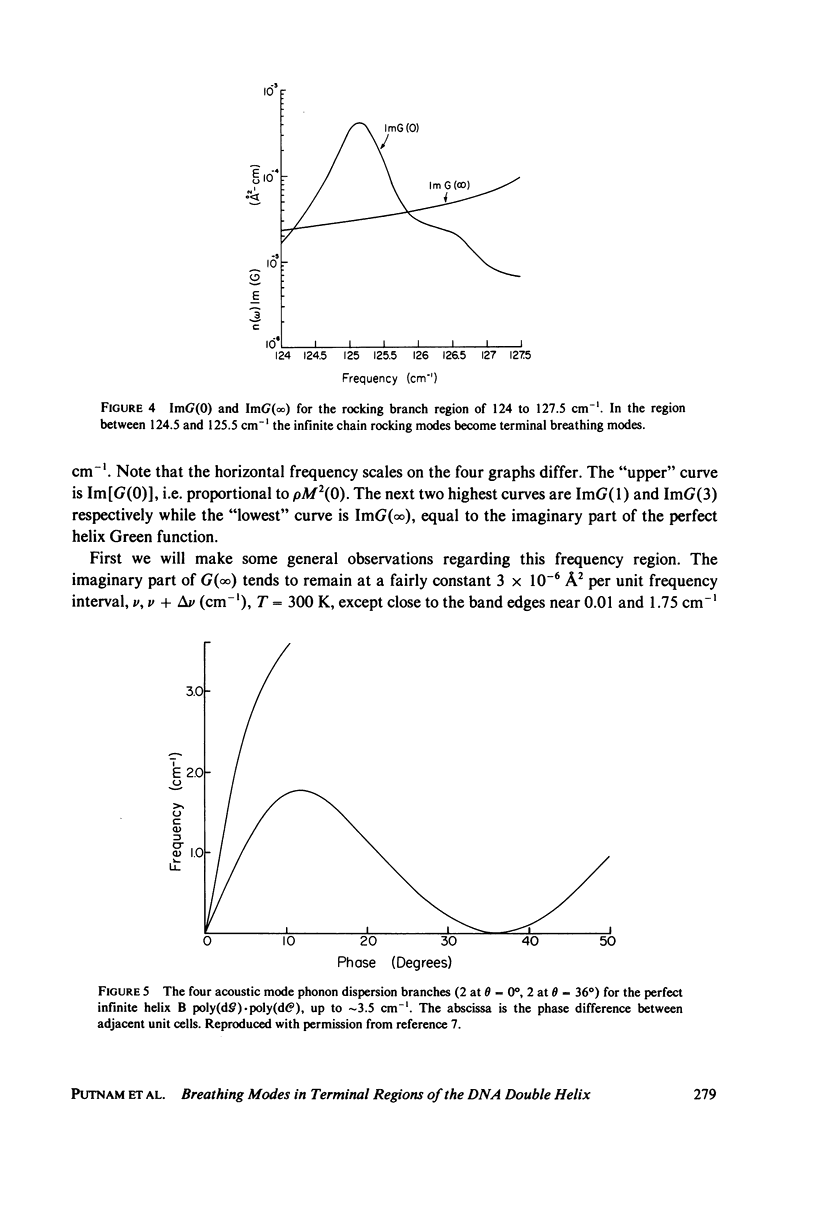
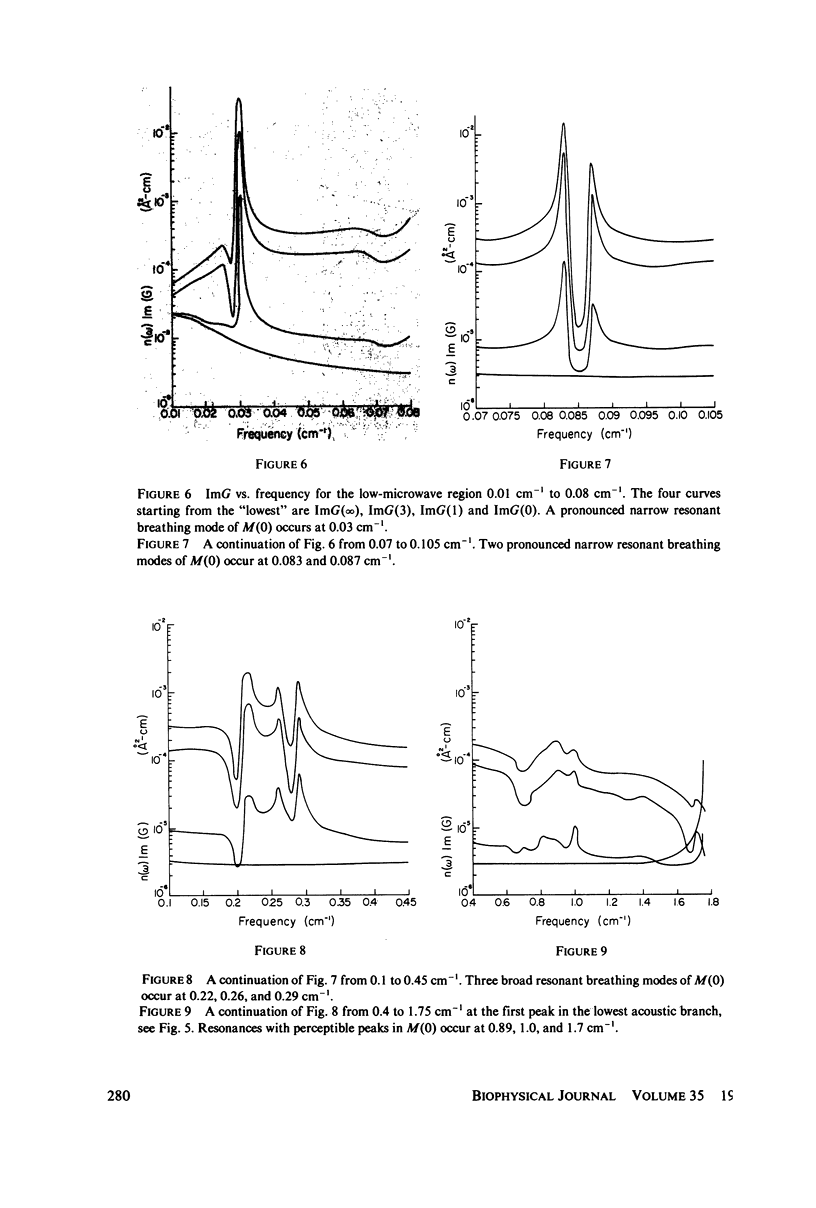
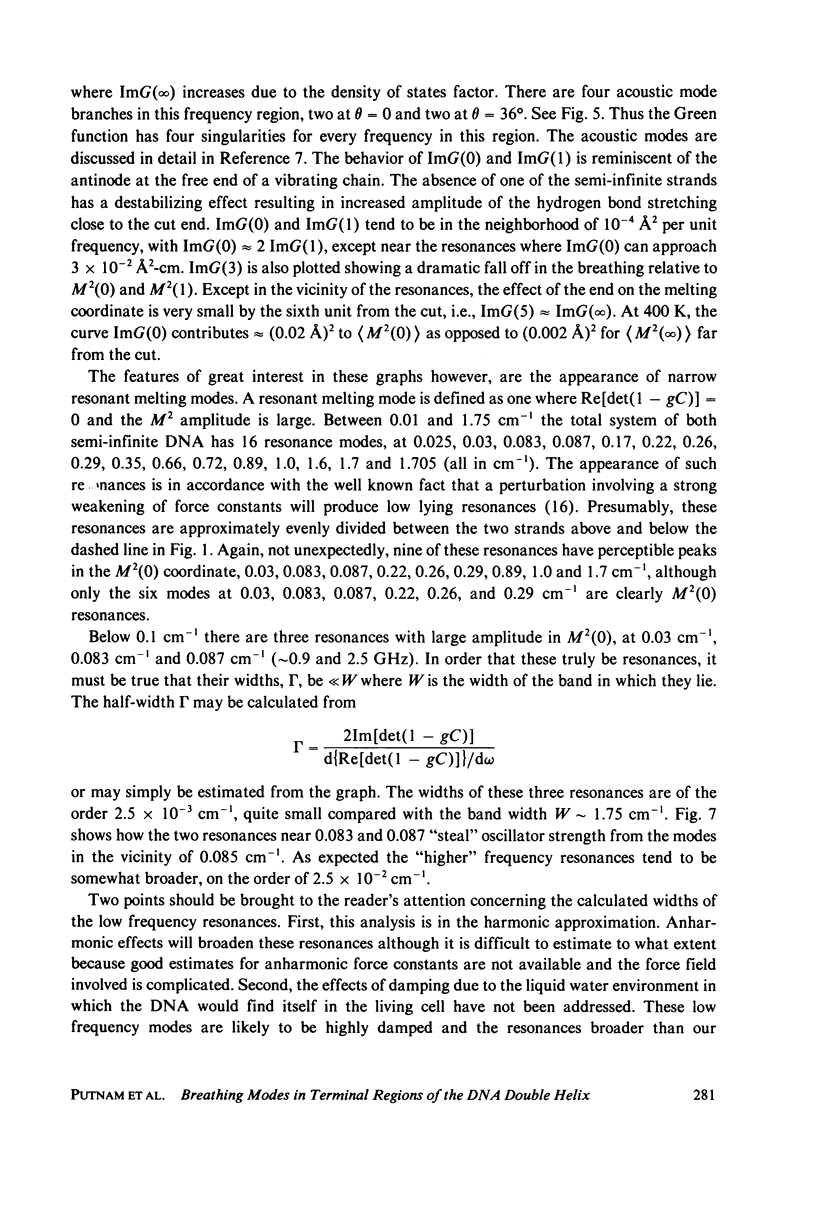
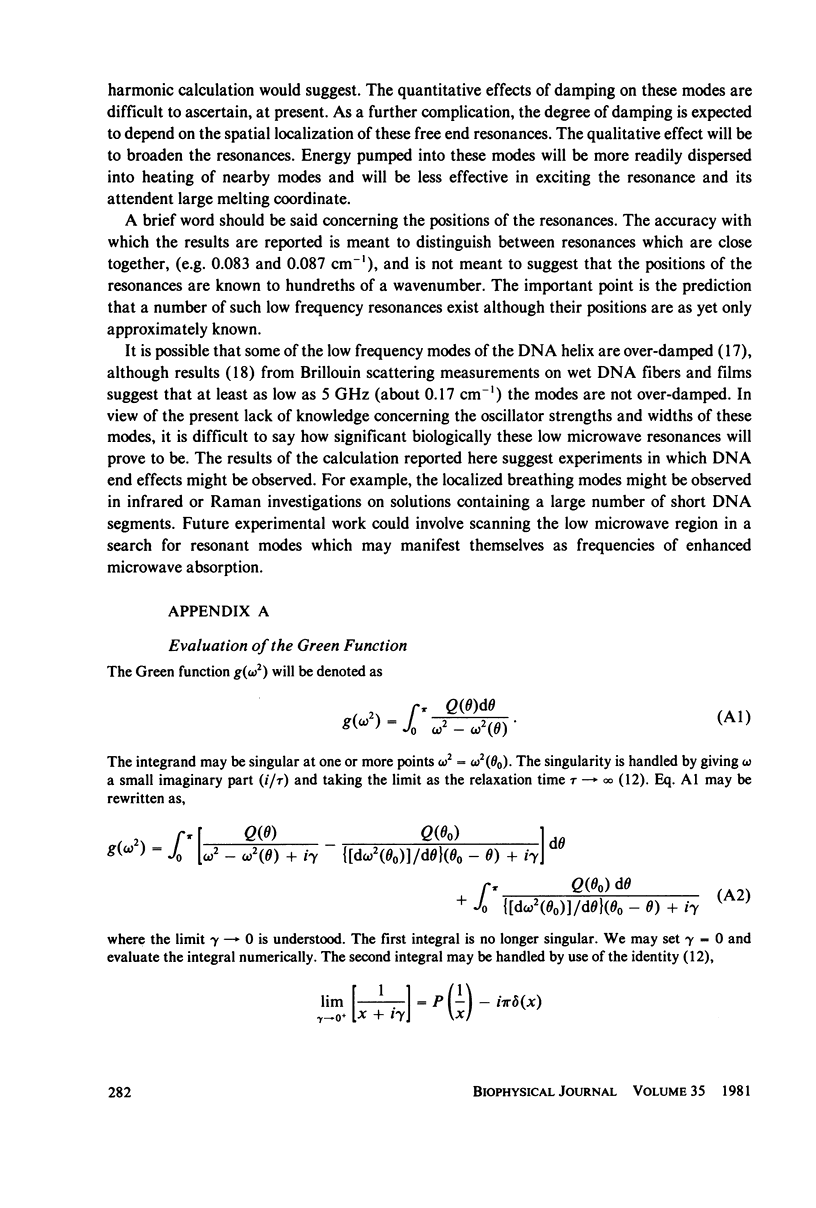
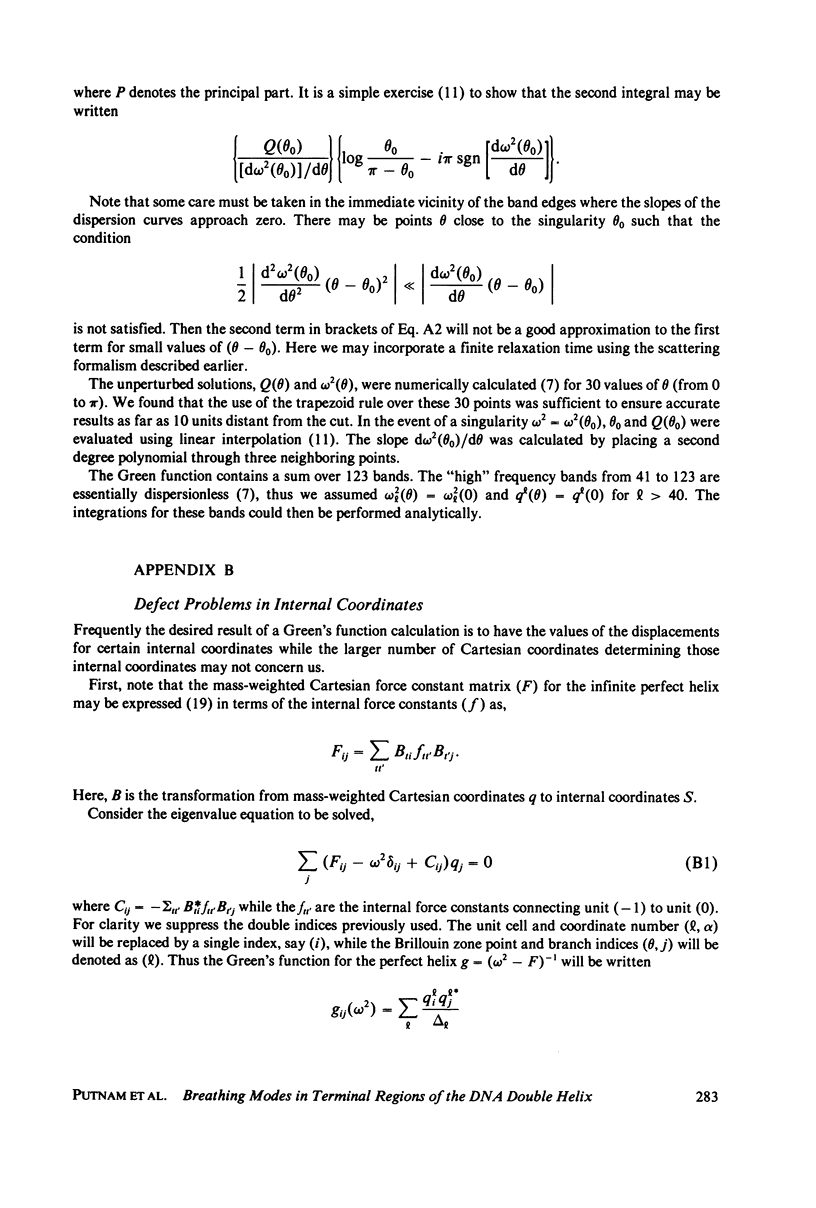
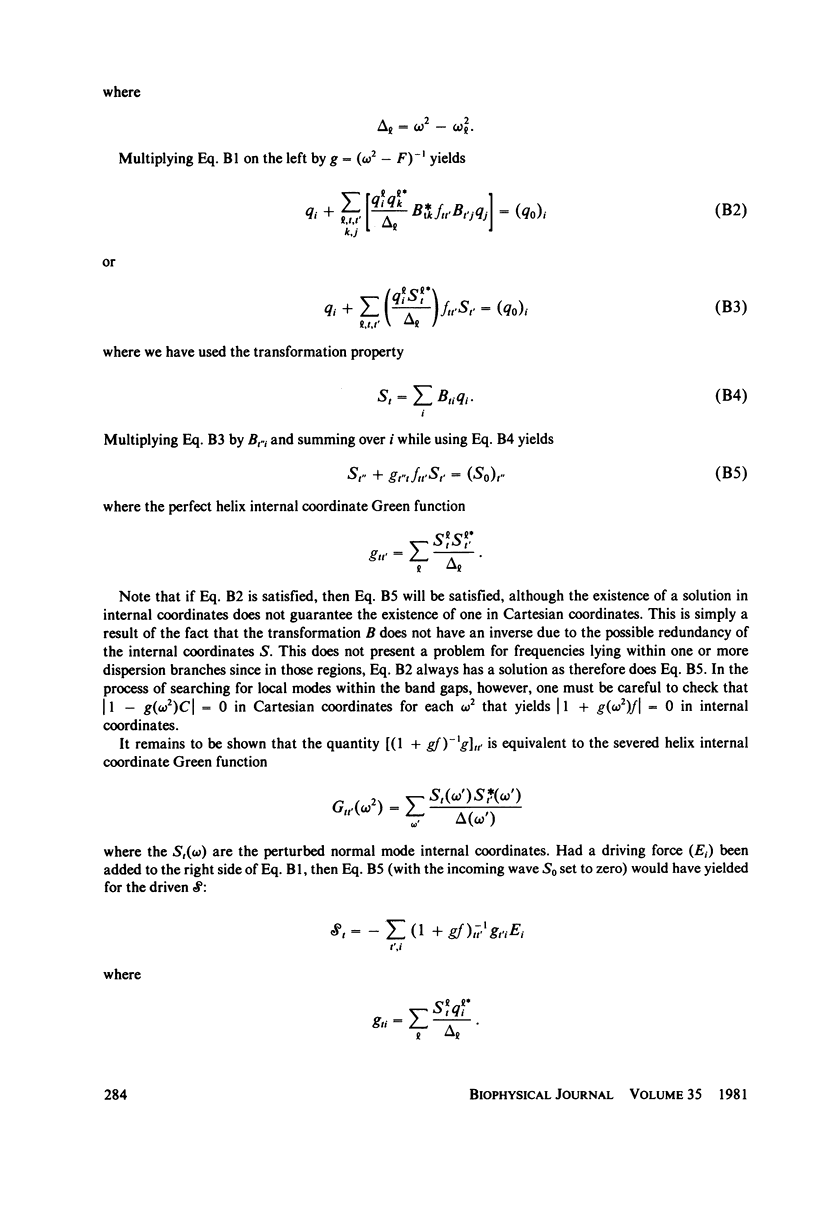
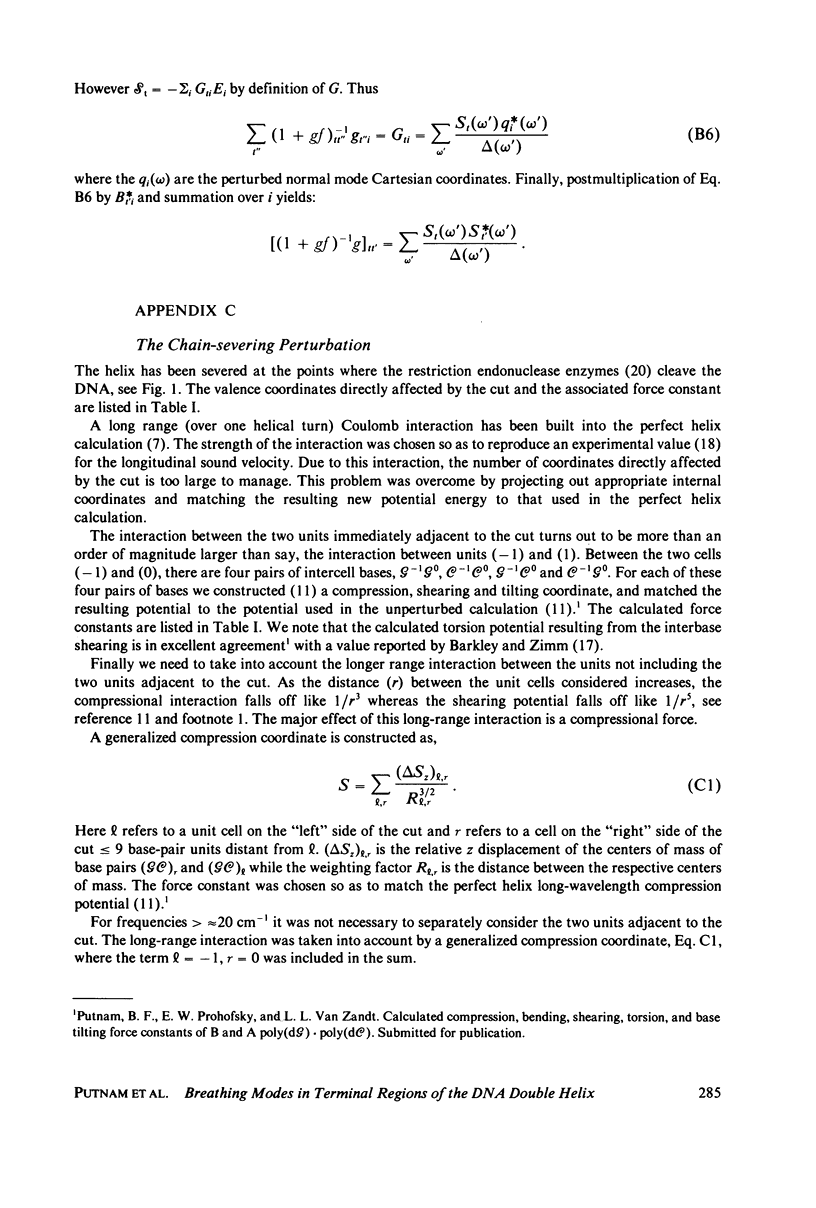
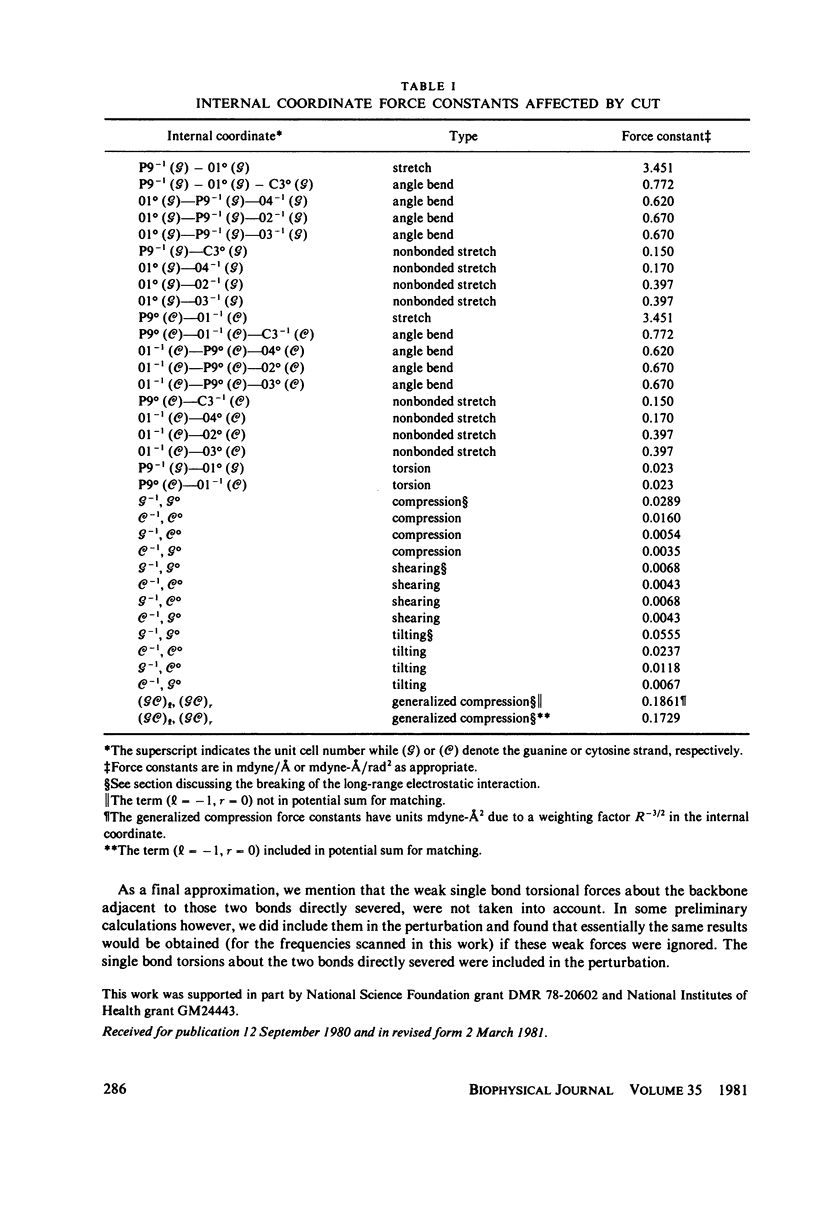
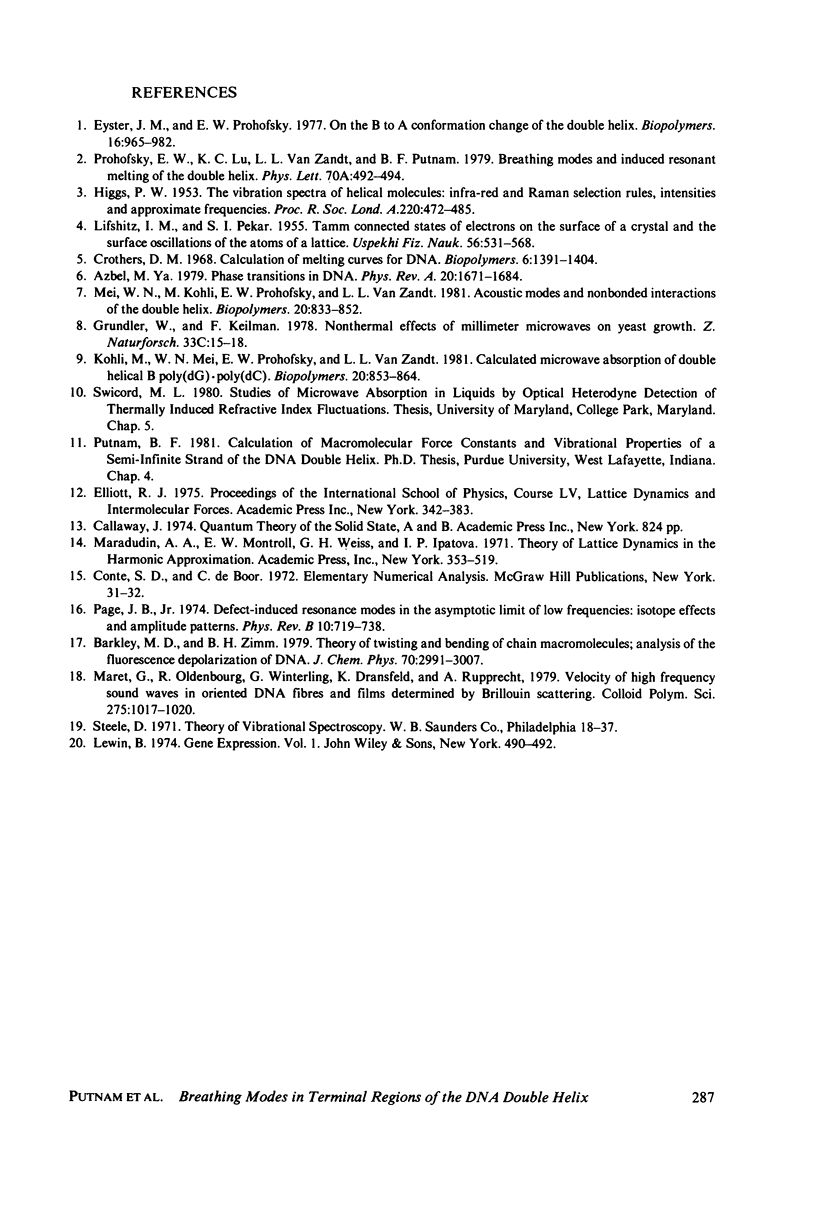
Selected References
These references are in PubMed. This may not be the complete list of references from this article.
- Crothers D. M. Calculation of melting curves for DNA. Biopolymers. 1968 Oct;6(10):1391–1404. doi: 10.1002/bip.1968.360061003. [DOI] [PubMed] [Google Scholar]
- Eyster J. M., Prohofsky E. W. On the B to A conformation change of the double helix. Biopolymers. 1977 May;16(5):965–982. doi: 10.1002/bip.1977.360160503. [DOI] [PubMed] [Google Scholar]
- Grundler W., Keilmann F. Nonthermal effects of millimeter microwaves on yeast growth. Z Naturforsch C. 1978 Jan-Feb;33(1-2):15–22. doi: 10.1515/znc-1978-1-205. [DOI] [PubMed] [Google Scholar]
- Kohli M., Mei W. N., Prohofsky E. W., Van Zandt L. L. Calculated microwave absorption of double-helical B-conformation poly(dG).poly(dC). Biopolymers. 1981 Apr;20(4):853–864. doi: 10.1002/bip.1981.360200415. [DOI] [PubMed] [Google Scholar]


